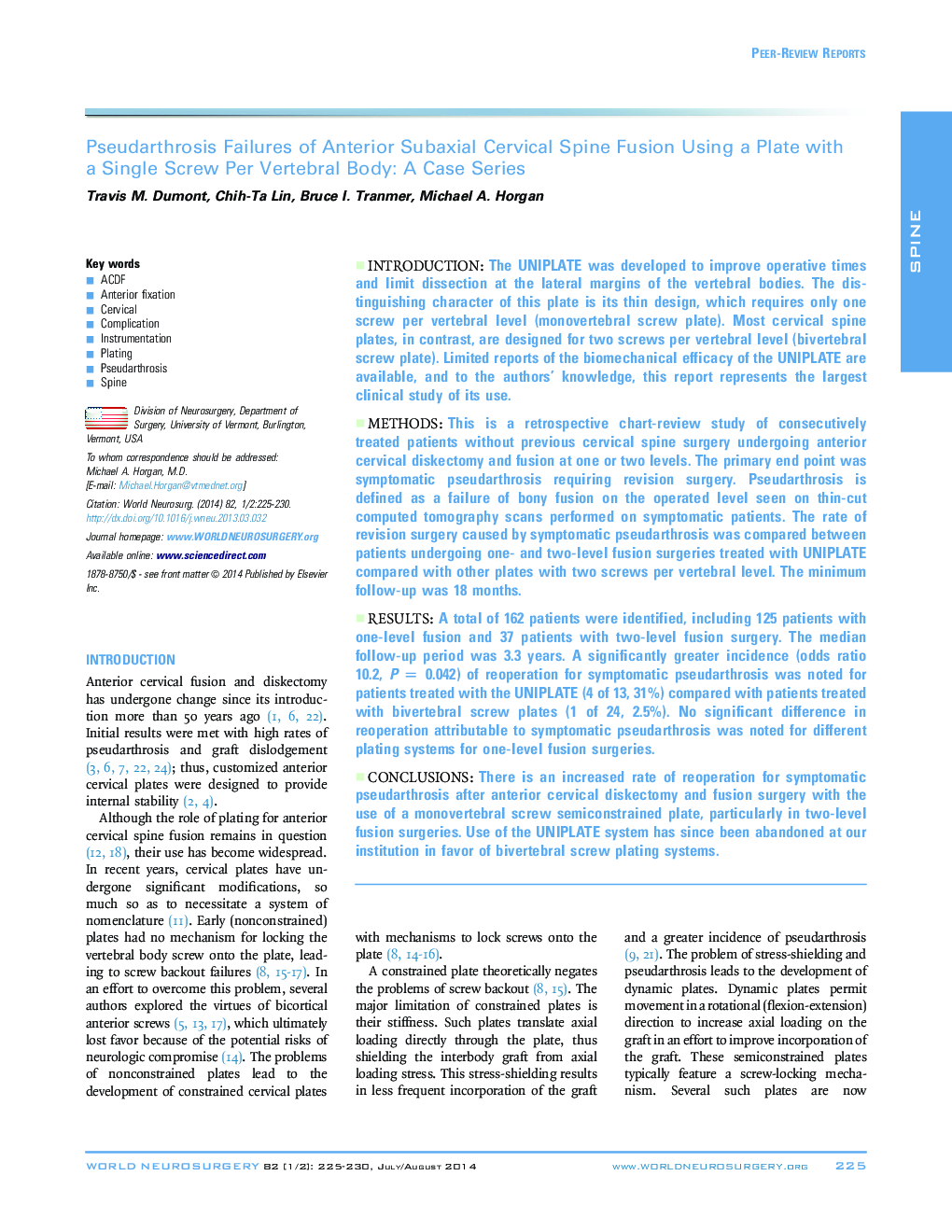| Article ID | Journal | Published Year | Pages | File Type |
|---|---|---|---|---|
| 3095551 | World Neurosurgery | 2014 | 6 Pages |
IntroductionThe UNIPLATE was developed to improve operative times and limit dissection at the lateral margins of the vertebral bodies. The distinguishing character of this plate is its thin design, which requires only one screw per vertebral level (monovertebral screw plate). Most cervical spine plates, in contrast, are designed for two screws per vertebral level (bivertebral screw plate). Limited reports of the biomechanical efficacy of the UNIPLATE are available, and to the authors' knowledge, this report represents the largest clinical study of its use.MethodsThis is a retrospective chart-review study of consecutively treated patients without previous cervical spine surgery undergoing anterior cervical diskectomy and fusion at one or two levels. The primary end point was symptomatic pseudarthrosis requiring revision surgery. Pseudarthrosis is defined as a failure of bony fusion on the operated level seen on thin-cut computed tomography scans performed on symptomatic patients. The rate of revision surgery caused by symptomatic pseudarthrosis was compared between patients undergoing one- and two-level fusion surgeries treated with UNIPLATE compared with other plates with two screws per vertebral level. The minimum follow-up was 18 months.ResultsA total of 162 patients were identified, including 125 patients with one-level fusion and 37 patients with two-level fusion surgery. The median follow-up period was 3.3 years. A significantly greater incidence (odds ratio 10.2, P = 0.042) of reoperation for symptomatic pseudarthrosis was noted for patients treated with the UNIPLATE (4 of 13, 31%) compared with patients treated with bivertebral screw plates (1 of 24, 2.5%). No significant difference in reoperation attributable to symptomatic pseudarthrosis was noted for different plating systems for one-level fusion surgeries.ConclusionsThere is an increased rate of reoperation for symptomatic pseudarthrosis after anterior cervical diskectomy and fusion surgery with the use of a monovertebral screw semiconstrained plate, particularly in two-level fusion surgeries. Use of the UNIPLATE system has since been abandoned at our institution in favor of bivertebral screw plating systems.
